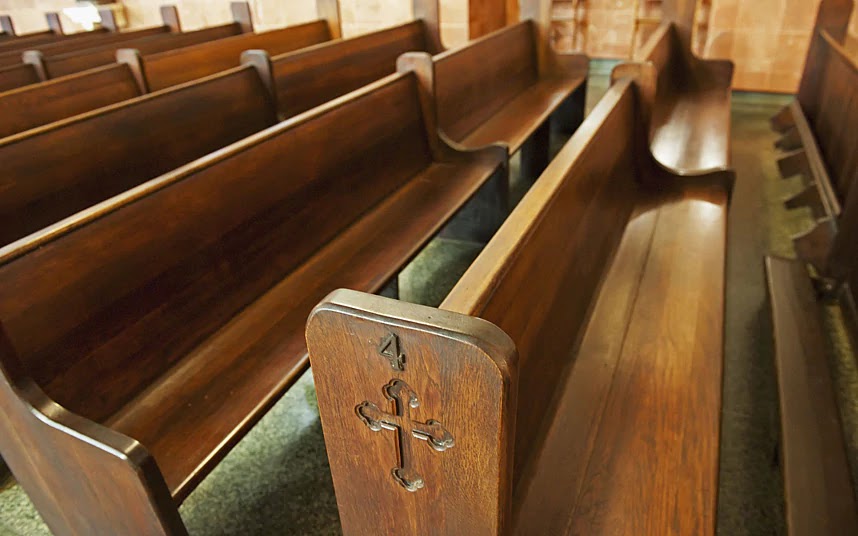Church Attendance, the Pandemic, and Discipleship
 What long-term effects will the pandemic have on religious congregations? Specifically, what will be the results on attendance?
What long-term effects will the pandemic have on religious congregations? Specifically, what will be the results on attendance?
Churches were already experiencing waves of historic-level crises prior to the pandemic. The very model of “going to church” is a 16th century innovation within a Christendom mentality. Five hundred years ago, churches were central cultural institutions. Churches derived from the so-called Magisterial Reformation (the ones that were aligned with the governing authorities)—from the Lutheran, Reformed, and Anglican traditions—were competing expressions of the fracturing empire.
Holograms of that fracturing empire planted themselves in America. America’s unique circumstances, first in the colonies and then in the nation, fostered a new landscape for churches: lots of land, no established religious authority at the federal level, rapid development of towns and cities, and the need for places to congregate. Historian Martin Marty wrote that Americans had a “mandate to congregate.” Even religions, such as Buddhism and Hinduism, whose practices did not include weekly congregating did so in America.
But, church attendance has been slipping and, at times, caving. Slipping since the middle 1960s for ecumenical Protestant denominations and for about 15 years for Southern Baptists. Caving since Vatican II and then with the abuse scandals of recent decades for Catholics. Even in numerically-strong congregations, the definition of “active membership” is attending once per month.
And you all know about the sharp rise of the “nones” and “dones” over the past 20 years.
Recall that Lovett Weems, a church demographer, warned a decade ago that the society was facing a “death tsunami.” The death of the last of the World War II generation and then aging Baby Boomers would build the highest per capita death rate the nation had seen since the 1940s. (I’ve been unable to find how Weems’ projection is playing out.)
Then along came the Covid pandemic. Death rates have soared. Grief, anger, depression, frustration, and conflict have poured into the nation’s oxygen supply. And the habit of church attendance has taken an enormous blow. Perhaps evangelical congregations that defied public health practices and kept meeting are faring better—at the moment—in terms of pre-Covid v. present day attendance. But many congregations are either, at present, seeing well-less than half the attendance in comparison to pre-Covid days.
Church-going is a habit. For millions of people, that habit is now broken.
One could say the pandemic is merely accelerating a trend that was already well-underway. Maybe.
What will be the longer-term impacts on ministry? There were and are several strong positives about the frequent attendance model, positives for both church and society:
- Congregations are great stages for practicing skills necessary for public life, such as public speaking, group decision-making, dealing with differences.
- Congregations promote joining something larger than one’s family.
- Congregations, of a category, promote civic, ecumenical, and interfaith cooperation for the common good.
- Congregations are at the forefront of providing volunteers to help in times of crises.
- Congregations, sustained by their members, provide spaces for public gatherings and some provide spaces of beauty; we should not underestimate the importance of these spaces—and I’d say especially the beautiful spaces.
- Frequent attendance could be formational. But what is being formed?
I deeply admire the legions of ways pastors and other congregational leaders have embraced or developed new ways of reaching out, to keep in touch with members, during the pandemic. Daily devotionals, written or live-streamed. Changing the meaning of attendance to include online along with in-person. Learning to use technology for teaching. Drive-by celebrations. Use of outdoor spaces.
And, (not but) the attendance model of church has a real problem. If the end of all the efforts to create an attendance habit is discipleship, then assessing the effectiveness of the model should be based on that end. Fifteen years ago, the granddaddy of seeker-sensitive churches, Willow Creek Community Church in South Barrington, Illinois, conducted a broad and deep survey of their attendees. Leadership determined that the effectiveness of their ministrations with attendees could be judged by how those attendees assessed their capacity to love God and neighbor grew through their association with the church.
The result of that study was this: the attendees told the leadership that they did not judge their capacity to love God and neighbor was significantly increased by attending. Butts in seats did not translate to a growing capacity to love.
Of course, this survey done in one congregation is not a comprehensive indictment of a model. I am sure there are thousands of congregations—small, large, and in-between—where there is a plethora of stories of transformed lives that were not simply the result of attendance but without attendance would have been impossible.
Today, the mega-identity that has swallowed other identity markers culturally is political identity. Most Americans, and perhaps the majority of church-goers, believe hyperpolarized partisan political identities are causing dangerous damage in public life.
Those identities are not oriented to loving God and neighbor. If we who think the love of God and neighbor is essential to what it means to be human, religious leadership should prayerfully, collaboratively consider what kind of interactions among congregants could subvert the dominant political identity to make way for essential humanity.
Attendance is only a part of that equation. I think we have a sterling opportunity, might I say “mandate,” to seek the other factors.
Dr. Gary Peluso-Verdend is president emeritus at Phillips Theological Seminary and is the executive director of the seminary’s Center for Religion in Public Life. The opinions expressed in this blog are those of the author. Learn more about the Center’s work here and about Gary here.


Comments are closed.